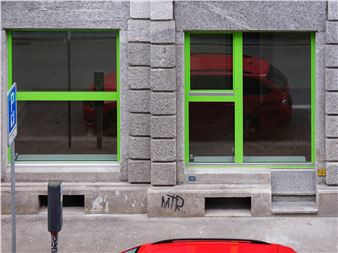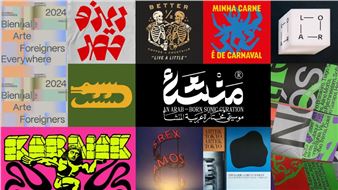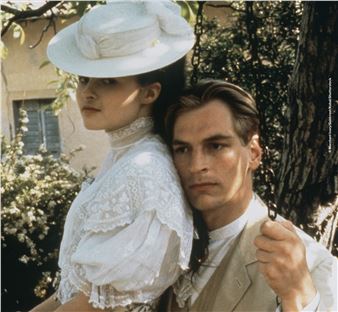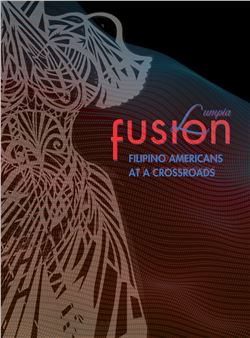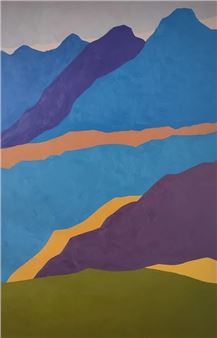Floating
Everything was threatened, everything had become unsure, even the menace itself, since the danger had changed, transposed from the zone of incidence to that of permanence.-Hermann Broch, The Death of Virgil
Every hundred years or so, there comes an experience that is almost universally shared. Whether it be a war or an illness, along comes something that creates a collective shorthand that can divide or unite strangers without having to mention its source. While we mark the first anniversary of this iteration, it seems that the end is near and far from near, that we’re nearing a turning point or continuing straight, that we’re landing or still falling.
Beate Geissler / Oliver Sann’s current work investigates the myth of finality, failed universalism, and the fear of an autocracy. These ideas may seem disparate at first glance, but upon closer inspection, they all challenge the idea of certainty, that one idea, one person, one final outcome can’t be guaranteed. In this exhibition, the artists greet their viewers with the phrase “NO LONGER NOT YET” beautifully painted in gold leaf on the gallery window, the verbal limbo mirroring its surroundings and passersby. Downstairs, the piece How Does the World End (For Others)? continues the conversation with the image of a dolphin swimming in the wake of a boat. As the placid animal makes its way through water and air, we are reminded by its piercing movement of our projected wisdom or lack thereof.
Gereon Krebber is an artist that likes to push limits. Whether he’s creating works using such unconventional materials as toothpaste, clingfilm, gelatin, packing tape, caramel, or mayonnaise, or more traditional media, Krebber aims to create works that both intrigue and repulse. His ceramic pieces are fired at the highest temperature the material can withstand without reaching its breaking point, creating a glaze that shines, runs, and bubbles. The dome-topped squiggles are arranged in smacks that are as strangely animated as they are strange. Still, they invite you to investigate them while also serving as a reminder that touching a floating beauty does not always give you a kind reward.
Martin Schwenk creates sculptures from man-made materials that evoke the untouched parts of nature we have yet to discover. While the artist works primarily in three-dimensional forms, his watercolors are often congruent to his sculptural pieces, although with these works on paper, he is freed from the constraints of gravity. Here, the fantastical plants hover and seduce with their sweet pastels and curvaceous forms dancing amid the pristine white plane. With Schwenk’s works, the possibility arises to experience nature, art, and abstraction simultaneously and in the same part.
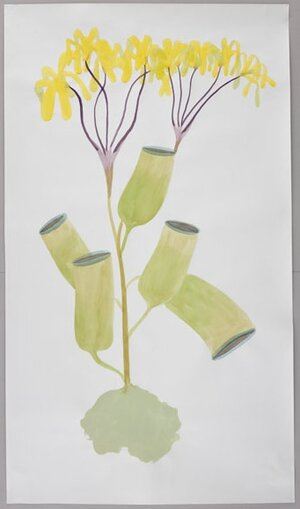
Recommended for you
Everything was threatened, everything had become unsure, even the menace itself, since the danger had changed, transposed from the zone of incidence to that of permanence.-Hermann Broch, The Death of Virgil
Every hundred years or so, there comes an experience that is almost universally shared. Whether it be a war or an illness, along comes something that creates a collective shorthand that can divide or unite strangers without having to mention its source. While we mark the first anniversary of this iteration, it seems that the end is near and far from near, that we’re nearing a turning point or continuing straight, that we’re landing or still falling.
Beate Geissler / Oliver Sann’s current work investigates the myth of finality, failed universalism, and the fear of an autocracy. These ideas may seem disparate at first glance, but upon closer inspection, they all challenge the idea of certainty, that one idea, one person, one final outcome can’t be guaranteed. In this exhibition, the artists greet their viewers with the phrase “NO LONGER NOT YET” beautifully painted in gold leaf on the gallery window, the verbal limbo mirroring its surroundings and passersby. Downstairs, the piece How Does the World End (For Others)? continues the conversation with the image of a dolphin swimming in the wake of a boat. As the placid animal makes its way through water and air, we are reminded by its piercing movement of our projected wisdom or lack thereof.
Gereon Krebber is an artist that likes to push limits. Whether he’s creating works using such unconventional materials as toothpaste, clingfilm, gelatin, packing tape, caramel, or mayonnaise, or more traditional media, Krebber aims to create works that both intrigue and repulse. His ceramic pieces are fired at the highest temperature the material can withstand without reaching its breaking point, creating a glaze that shines, runs, and bubbles. The dome-topped squiggles are arranged in smacks that are as strangely animated as they are strange. Still, they invite you to investigate them while also serving as a reminder that touching a floating beauty does not always give you a kind reward.
Martin Schwenk creates sculptures from man-made materials that evoke the untouched parts of nature we have yet to discover. While the artist works primarily in three-dimensional forms, his watercolors are often congruent to his sculptural pieces, although with these works on paper, he is freed from the constraints of gravity. Here, the fantastical plants hover and seduce with their sweet pastels and curvaceous forms dancing amid the pristine white plane. With Schwenk’s works, the possibility arises to experience nature, art, and abstraction simultaneously and in the same part.

 ARTISTS
ARTISTS







